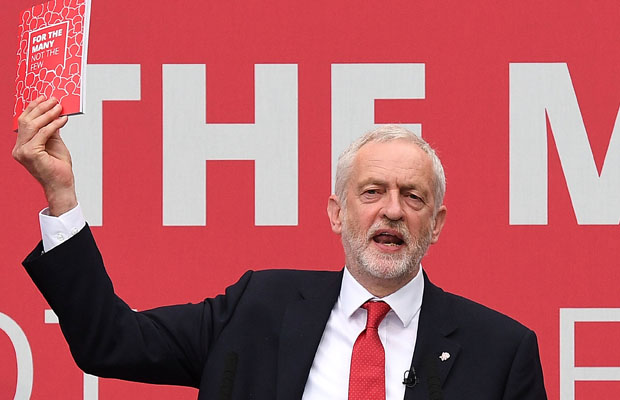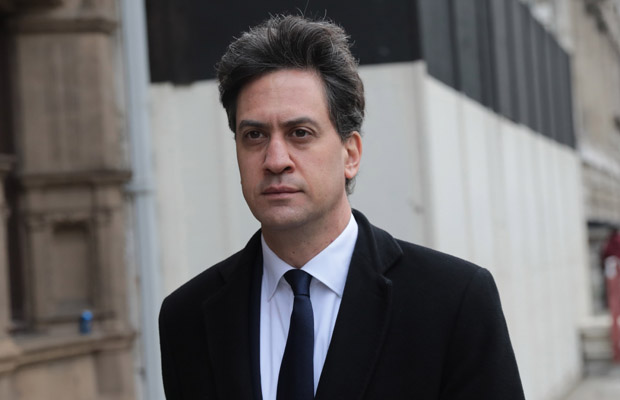A draft version of Labour’s manifesto for the election on June 8 was leaked last week. Today we got the official version.
Labour says all the spending commitments are paid for, mostly by tax rises for top earners and business.
Does it pass the FactCheck test?

Is it really “fully costed?”
That’s the claim on page 10. But it’s open to question.
The manifesto sets out £48.6 billion a year in day-to-day spending on a range of eye-catching policies, including more money for schools and the NHS, scrapping tuition fees, a pay rise for public sector workers and 10,000 more police officers.
It promises to pay for this with tax changes including an income tax hike for high earners, a corporation tax rise and a new Excessive Pay Levy on companies with a large number of highly-paid employees.
The party claims the full package of measures will bring in exactly the £48.6 billion they need to fund their ambitious spend.
There are some problems here…
Uncertainty: The Institute for Fiscal Studies thinks Labour’s assumptions about how much money these tax measures will really bring in are “highly uncertain”.
Higher taxes usually bring in money in the short term, but over time people tend to change their behaviour to avoid paying higher taxes: they might retire earlier, shift more of their income into pensions, or even leave the country.
Drill down into some of the specific numbers, and the sense of vagueness and uncertainty grows.
For example, Labour say they will bring in an extra £6.5bn a year by doing more to tackle tax avoidance and evasion – a suspiciously precise number for something that is notoriously hard to calculate.
Labour says they have chosen a number that lies “between the Conservatives’ and Labour’s own commitments from the 2015 manifestos”.
It’s true that the £6.5bn figure splits the difference between the anti-tax avoidance targets announced by Labour and the Tories last time.
What Labour doesn’t mention is that when the major parties came out with these figures in 2015, the IFS accused them flatly of “just making up numbers”.
Cost of nationalisation: Labour say they want to re-nationalise energy supply networks, railways, Royal Mail and water companies.
The detail of how this will be achieved and how much it will cost is not explained in today’s documents.
Cost of National Investment Bank: Last year the shadow chancellor, John McDonnell, announced a “firm pledge” for a new investment bank.
He said the government would supply £100bn of borrowed money to float the new publicly owned banks, and raise an additional £150bn from the private sector.
The bank idea is in the manifesto, but there’s no mention of that £100bn. We asked Labour about this and they told us: “The National investment bank is mainly private sector capital with some public seed capital. We are hoping to say more about this later in the campaign.”
They did not say how much government money will be ploughed into the bank, so we can’t say whether Mr McDonnell has gone back on his word.
National Transformation Fund: Labour’s plans pass their own test for “fiscal credibility”: they’ll increase spending on the everyday business of government by £48.6 billion, and they’ll take the same amount in tax.
But it’s on the long-term spending – which Labour have exempted from their Fiscal Credibility Rule – where the numbers are trickier.
The manifesto’s flagship infrastructure package is set to cost £250 billion over 10 years. This is long-term capital spending on things like new railways, energy and broadband.
The costings of this have not been published today, but Labour have confirmed to us that the fund will be paid for by government borrowing, taking advantage of low interest rates.
But hang on. Labour’s manifesto also says:
“We are committed to ensuring that the national debt is lower at the end of the next Parliament than it is today.”
How can you increase borrowing but promise to lower the national debt at the same time?
We pushed Labour on this and they told us the commitment they are making is to have debt falling “as a percentage of (trend) GDP”.
In other words, they are hoping that the economy will grow so quickly over the next five years (thanks in part to a boost from infrastructure spending) that debt as a share of the nation wealth will fall.
This is not actually stated in the manifesto, and it’s fair to say that Labour have not published any hard figures to back up this optimistic forecast for the economy.
Who bears the cost?
Businesses will bear the brunt of paying for Labour’s spending plans, with Corporation rising to 26 per cent, a hike they hope will bring in nearly £20bn a year.
The other big tax hike hits individuals with a taxable income of more £80,000 a year.
Opinions differ about how to describe these people. The Daily Mail called them “the middle class” today, which seems a bit of a stretch: they are the highest-income 4 per cent of taxpayers, according to the IFS.
On the other hand, there are 1.3 million of these people, and someone who earns £80,000 in a single-income household with high housing costs and several children might not feel like one of the super-rich.
The IFS says the high-income group Labour proposes to target earns more than 20 per cent of all taxable income – but pays more than 40 per cent of all income tax.
Since 2010, a string of government policy changes have already increased the income tax paid by people with the highest incomes.

Is this manifesto more radical than the last one?
Arguably, Corbyn isn’t much more radical than Miliband on tax. He’s dropped the 2015 Mansion Tax plan, but lowered the tax thresholds for top earners.
Unlike Miliband, he’s guaranteed no income tax rises for 95 per cent of people.
But Corbyn’s manifesto goes further than Ed Miliband’s on a number of key policies.
On university tuition fees, Miliband only pledged to cut them by a third. Corbyn is promising to abolish tuition fees outright and re-introduce maintenance grants for students.
Labour’s education funding pledges were not dissimilar from the Tories’ in 2015. Both promised to increase the core schools budget in line with inflation.
This time around, although Labour has not explicitly promised this, the manifesto commits to “ reversing the Conservatives’ cuts”. Presumably, this means they will boost the amount spent per pupil above inflation.
The party has repeated its commitment to reduce class sizes for five-, six- and seven-year-olds.
But Corbyn has a range of new pledges, such as free school meals for all primary school children and lifting the cap on teachers’ pay.
The new manifesto includes a 20-point plan for improving workers’ rights, including banning zero-hours contracts, raising the minimum wage, and ensuring UK workers’ are not undercut by foreign labour.
Mr Miliband also pledged to do things like raising minimum wage and banning zero-hours contracts.
But Corbyn is much clearer in his support for trade unions than Miliband, who was plagued by accusations that he was in the pocket of union leaders.
In 2015, the manifesto only mentioned trade unions once – compared to 15 times in the new one.
By Georgina Lee, Martin Williams and Patrick Worrall



